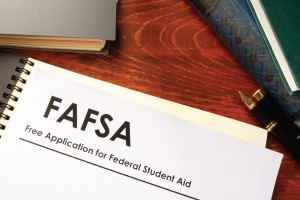How Do 529 Plans Affect Scholarships?
Some parents are often hesitant to open a 529 plan for their children because college seems so far away. Beyond that, the prevailing belief among many families is that they will be able to pay for college through financial aid and scholarships.
There’s a lot to love about scholarships. Unlike student loans, the money awarded doesn’t need to be repaid. A student’s chances of winning a full ride to college is slim, however, with financial aid experts estimating only 20,000 students a year nationwide receive full scholarships.
What does that mean for your family? Scholarships can help fill some gaps when a family hasn’t saved enough to cover the entire college price tag. So even though there’s a chance your child may be awarded a partial or full scholarship in the future, that doesn’t mean you should rule out saving through a 529 plan.
Consider:
- There’s always graduate school. A child who earns a scholarship may decide to go on to graduate school and might need help paying. According to a New America Foundation study, the median combined student loan balance for those who earned a graduate degree was $57,600. Saving in advance and then using funds from a 529 account will likely reduce your child’s potential debt burden.
- You can use a 529 plan to pay for more than tuition. If your child receives enough scholarship support to pay for tuition and fees, you can still make tax-free withdrawals from your 529 plan to cover the cost of books, required supplies and equipment, some room and board, and many other qualified higher education expenses.
- You can transfer the account to another family member. An account can be changed at any time to another qualifying member of the family without tax consequences, whether that be a younger sibling, parent, grandparent, niece or nephew, etc. Plus, with the tax reform law in 2018, 529 plans now can also be used to pay for some tuition at public, private and religious K-12 schools.
Or, you can use the savings to continue your own education. If you’re looking to take your career to the next level, or transition into a new field, 529 plans can be used at any eligible educational institution, including community colleges and vocational schools.
- The money you save is always yours. A primary benefit of using a 529 plan is that your money grows federal income and Virginia state income tax-free, and the withdrawals are also tax-free as long as they are used to pay for qualified higher education expenses. Should your student receive a scholarship, the money you saved is still yours and you can withdraw the funds up to the amount of the tax-free scholarship, penalty-free (but you may have to pay income tax on the earnings).



